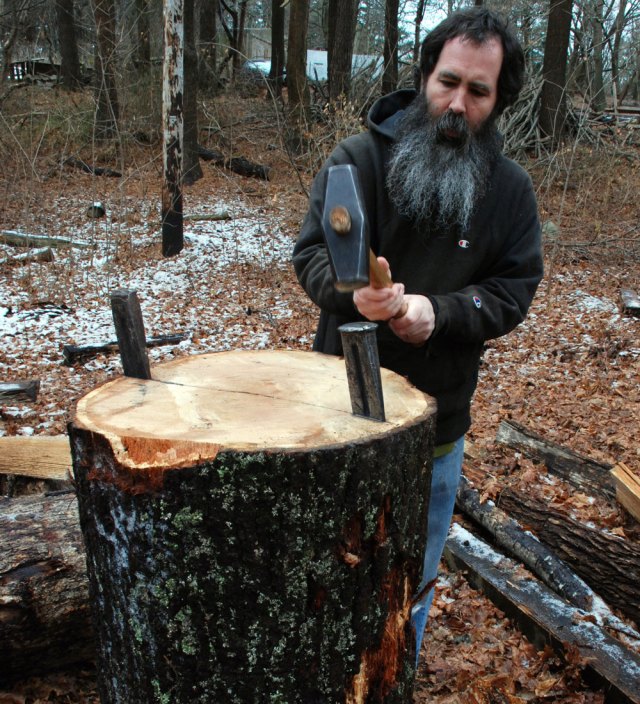
Some will ask, “why oak?” Besides its great strength and durability, oak has features that make it ideally suited to working this way. It is a ring-porous hardwood, a term referring to the way oak trees grow. In the first part of the growing season, oak trees put on a band of nearly hollow, thin-walled pores. The second phase of growth features a layer of very tough, fibrous material, denser than the previous growth. This separation between “early wood” and “late wood” is one of the key identifying factors in these hardwoods, as opposed to timbers such as cherry and maple, in which the pores and fibers are evenly distributed. Another feature of oaks, and most other ring-porous hardwoods, is the prominence of the tree’s medullary rays. These are cells that radiate out from the pith, or center of the tree, toward the bark. Almost all the ring-porous hardwoods split or cleave cleanly and accurately along the medullary rays. This is the principal feature of the oaks that makes them well-suited for riving.
— from the forthcoming “Make a Joined Stool from a Tree,” by Jennie Alexander and Peter Follansbee
P.S. You can follow along all the posts about this book by clicking on the “Make a Joined Stool from a Tree” in the “Categories” section at right.